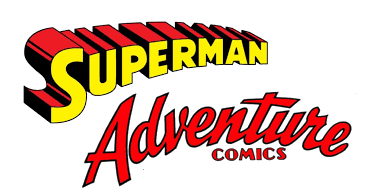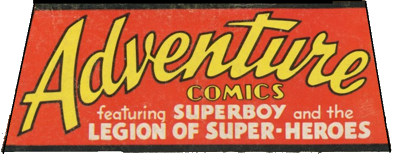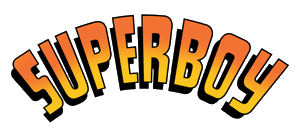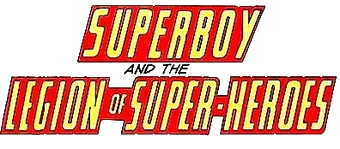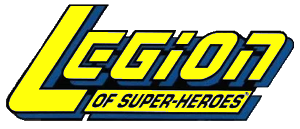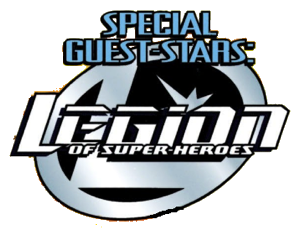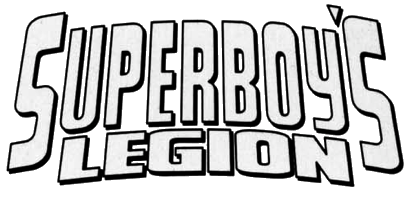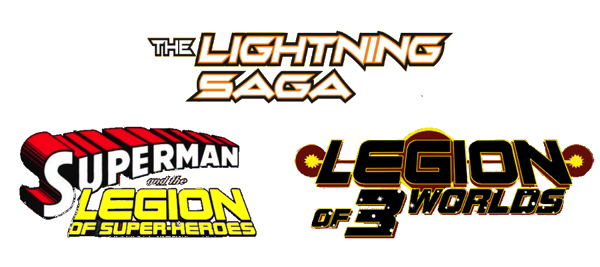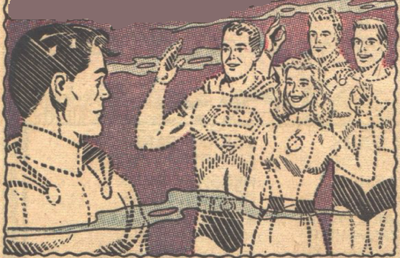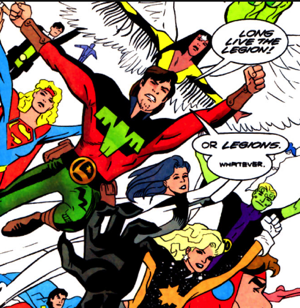Before the Legion of Super-Heroes debuted, several stories were published that were later revisited as Legion stories. In those days comics were seen as a disposable medium, and readers were not as sensitive to continuity issues. It wasn't unusual for creators to rework previously-published stories in a different context.
LSH Eras
Significant divisions in the publishing history of the LSH. Listed chronologically.
|
|
|
Who would have thought that a one-shot Superboy story would be the seed that spawned a team that would last over half a century (so far) and gain the devotion of thousands of fans? These earliest Legion stories were produced by many different creative teams, without regard to continuity or any awareness of the team's future. Confusion reigned. Did the Legion operate in the current day, the 21st century, or the 30th century? Were they adults or teens? Did Supergirl meet the original Legionnaires, or their children? What powers, exactly, did Star Boy have? How could Supergirl and Superboy both be Legionnaires, even though Superboy didn't know that Supergirl existed or would exist? Later creative teams and fans came up with workable solutions to all these confusions -- sometimes several different solutions, which led to confusions of their own. Some things just had to be ignored as chronicler's error, others were cleverly included into Legion continuity. Most of the stories of this period are fluff, not even significant as historical pieces. But several do stand out, including "The Legion of Super-Heores" (Adventure #247), "Supergirl's Three Super-Girl Friends" (Action #276), "Superboy's Big Brother" (Superboy #89), "The Secret of the Seventh Super-Hero" (Adventure #290), and "The Boy With Ultra-Powers" (Superboy #98). |
|
With Adventure #300, "Tales of the Legion of Super-Heroes" became a regular backup feature. Within a year, the Legion had pushed solo Superboy stories out of Adventure Comics entirely (although the Boy of Steel still had his own magazine, Superboy.) From the beginning, it was clear that the Legion series was something different. These first regular stories set the tone for all Legion stories, introducing elements that defined a Legion story. A heavy science-fiction influence was obvious (writer Edmond Hamilton, who created many of these stories, was a well-known and successful sf writer). Continuity, while not the double-faced diety/demon it would become in later decades, was present from the beginning, with story elements continuing across many issues (Mon-El's Phantom Zone imprisonment, Lightning Lad's death, the Time Trapper's Iron Curtain of Time, etc.) The stories were painted on a broad canvas of many planets, races, and societies, and the super-hero cast-of-thousands became the hallmark of the Legion (To help readers keep track of all the costumed heroes, Edmond Hamilton toyed with various "floating-head" graphic scorecards, and finally settled on the popular "Legion Roll Call," which later creative teams ignored to their own peril.) Characters died , became rogues, and even married (although it turned out to be a hoax). Too, many of these stories involve secrets or mysteries, which the reader may be able to solve before the Legion does...a story element that continues to this day. From the very beginning, women (at the time, "girls") were well-represented on the Legion and among its readers. Long before any modern nation had done so, the Legion elected a woman (Saturn Girl) as their leader. Gender issues, from the battle of the sexes to marriage, were often addressed in the Legion's pages. Although many of the stories are dated and seem quaint or even silly to a modern audience, there were still some gems, including "The Legion of Substitute Heroes" in #306, "The Secret Power of the Mystery Super-Hero" (#307), "The Super-Sacrifice of the Legionnaires" (#312), "The Code of the Legion" (#312), "The Lone Wolf Legionnaire" (#327), "The Super Moby-Dick of Space" (#332), The Starfinger saga (#335/336), "The Sacrifice of Kid Psycho" (Superboy #125), The Computo saga (#340/341), "The Evil Hand of the Luck Lords (#343), and The Super-Stalag of Space saga (#344/345) |
|
Jim Shooter hit the Legion, and neither would ever be the same. A fairly static, somewhat predictable super-hero team became dynamic, unpredictable, even manic. Readers could never tell what might happen next. Heroes teamed up with villains, characters died (then returned as ghosts), long-time members resigned, new faces appeared, we saw the Legion grown-up, new super-hero teams visited -- it was a heady, hectic three years that is universally acknowledged as The Legion's Golden Age. Two-part stories became the rule, rather than the exception. You didn't dare skip an issue, for fear of what you'd miss, and even the least of the stories were classics. Please note that I don't intend to imply that all of the stories listed in this section were written by Jim Shooter. But his influence certainly defined this era of Legion history. Picking the best stories of this period is almost impossible; they were all that good. My personal favorites, in no particular order, are: The Sun-Eater saga in #352/353, The Adult Legion (#354/355), "The Ghost of Ferro Lad" (#357), "The Outlawed Legionnaires/The Legion Chain Gang" (#359/360), "Escape of the Fatal Five/Battle for the Championship of the Universe" (#365/366), "No Escape From the Circle of Death" (#367), "The Colossal Failure/School for Super-Villains" (#371/372), "King of the Legion/Execution of Chameleon Boy" (#375/376), "Twelve Hours to Live/Burial in Space" (#378/379), and the tenth-anniversary story "The Origin of the Legion" in Superboy #147. And, of course, this period produced my personal Favorite Legion Story of All Time, "Mordru the Merciless/The Devil's Jury" in #369/370. |
|
The Legion entered a fifteen-month run as a backup feature in Action Comics. Life as a backup feature was hard...stories were short, involved small teams rather than the entire Legion, and (with one exception) did not continue from one issue to the next. Rather than going for space-spanning stories of swashbuckling derring-do against larger-than-life super-villains, the creative team opted for more personal, intense, character-driven tales, often concentrating on the "weakest" or "silliest" Legionnaires: Due Damsel, Matter-Eater Lad, Bouncing Boy, Chemical King. The approach worked -- just about every one of these stories is a winner. The most exceptional include "The Forbidden Fruit" in #378, "Half a Legionnaire" in #380, "The Hapless Hero" (#381), and "Lament for a Legionnaire" (#384). |
|
Six months after the last Legion story appeared in Action Comics, the group was back. In an eerie replay of history, the Legion started as an occasional back-up feature in Superboy, then a regular feature, then finally pushed Superboy out of his comic entirely. By mid-decade, Superboy was "the Legion comic" in the same way that Adventure had been. The Legion even spawned its own spinoff comic in 1976, Karate Kid -- which lasted a little over a year. Perhaps because the Legion itself had survived a brush with literary mortality, death was an ever-present factor in the stories of this period. Three Legionnaires met their doom: Invisible Kid (Lyle), Chemical King, and ERG-1 (who returned as Wildfire). The very titles of the stories were often death-oriented: "Trust Me or Kill Me," "Murder the Leader," "Timber Wolf - Dead Hero, Live Executioner," "The Silent Death," "Massacre by Remote Control," "The Legion of Super-Executioners," "Welcome Home Daughter -- Now Die," "Death Stroke at Dawn," "Trapped to Live -- Free to Die," "Stay Small or Die," "Charge of the Doomed Legionnaires," "This Legionnaire is Condemned," "Death of a Legend," "The City That Stopped Dead," "Hunt for a Hero-Killer," "Death Duel on Orando." The best stories of this period included "War Between the Nights and the Days" in #193, "The One-Shot Hero" in #195, "Brainiac Five's Secret Weakness" in #204, "Soljer's Private War" (#210), "The Legion's Lost Home" (#211), "1+1=3" in #216, and #217's "Future Shock for Superboy." |
|
With issue 231, the comic's title officially changed from Superboy to Superboy and the Legion of Super-Heores, acknowledging the reality of the Legion's takeover. (The change actually happened on the cover starting with issue 222, but the official title wasn't changed until 231.) In this period writer Paul Levitz, who had begun with issue 225 and wrote just about all the stories up to issue 251, began to display the talents that would make him the acknowledged master storyteller of the Legion. The period of 1977 through 1979 saw enormous changes in the Legion, as the characters finally matured and started on the path to adulthood. (One story, considered all but non-canonical by later fans, even attempted to explain why characters in their 20s and 30s were still referred to as "Boy," "Girl," "Lad," etc.) In this period, too, the creative teams deliberately began to use elements of the Legion's 20-year history in stories, delighting long-time fans and sending newcomers scurrying to the back-issue bins at comic shops. Continuity became important, as the Legion's background became more complex and more believable. Science fiction elements were used more carefully and to greater effect. Storylines that stretched across more than two issues became accepted LSH in fact, the annual five-issue "big" story became an instant tradition. Founding members Lightning Lad and Saturn Girl got married, Earth was invaded, and Brainiac 5 went mad (setting a pattern that would recur repeatedly in the future). Among the finest storylines of this era were #231's "A Day in the Death of a World," "The Millennium Massacre" in Collector's Edition C-55, "Murder Most Foul" in #239, the "Earthwar" saga in #241 - 245, and #247's "Once a Legionnaire." |
|
Finally, the Legion had its own comic: Legion of Super-Heroes (designated "volume 2" to distinguish it from a short-lived reprint series in the 70s). The Legion of Super-Heroes began this period as an absurd, somewhat campy super-hero team, and finished it as a mature, adult series that once again mixed the best of science fiction and modern-day myth. The less said about the storylines of 1980 and 1981's "Dark Man" fiasco, the better. The disappearance of Ultra Boy, and the subsequent arrival of the mysterious Legionnaire called Reflecto, turned into an interminable farrago of time-travel, mistaken identities, and just-plain-silly threats to the world. The turning point, surely, was a storyline which is almost-universally acknowledged as the best Legion saga ever: The Great Darkness in LSH(2) 290 - 294. Also among the exceptional stories were LSH(2) ANNUAL 1's "Monster in a Little Girl's Mind," and the tour-de-force of LSH(2) 300's "The Future is Forever." |
|
At long last, the Legion received something that it had never had in all its 26 years: an issue of Legion of Super-Heroes numbered 1. (There had been a four-issue reprint series by that title in the 70s, but that hardly counts.) Many fans, myself included, consider Legion of Super-Heroes v. 3 (1984-1989) to be the finest days of the Legion. Writer Paul Levitz and his creative team were at the height of their abilities; the characters were mature and depth-filled, the finely-detailed background became deeper and more complex with every issue. In this period, DC celebrated the Legion's 30th anniversary, and for a brief moment the team became the stillpoint around which the DC Universe rotated. The Legion survived the Crisis on Infinite Earths, John Byrne's desecration of Superman, the destruction of its past, and the deaths of both Supergirl and Superboy. A 20th-century Invasion of Earth was based on its background mythology and alien races. Not one but two spinoff series (Wanderers and L.E.G.I.O.N.) began in this period. While it's hard to pick the best of this magnificent period, five storylines stand out: The war against the Legion of Super-Villains in LEGION OF SUPER-HEROES 1 - 5, the "Forgotten" storyline in LEGION OF SUPER-HEROES 32 - 35, LEGION OF SUPER-HEROES 37 - 38's "Greatest Hero of Them All" story, the Conspiracy storyline culminating in LEGION OF SUPER-HEROES 50, and Projectra's final showdown with the Emerald Empress in LEGION OF SUPER-HEROES 58. |
|
In 1989, DC Comics (in all its infinite wisdom) decided that it was time to kill the Legion of Super-Heroes. As executioners,they chose fan writers Tom & Mary Bierbaum, and Keith Giffen, whose art had been steadily deteriorating for years. The comic ceased publication with issue #63, and a new Legion of Super-Heroes (designated "version 4") began with issue #1. It was five years later, and the Legion's bright, optimistic universe had turned ugly and depressing. The Legion had disbanded, various former Legionnaires had suffered terrible tragedies, and storytelling skills had vanished. The new series was stultifying and all but impenetrable even to long-time Legion fans. The art was murky, distorted, and full of shadows, making it hard to distinguish characters from one another. Cues such as brightly-colored, individualistic costumes were eliminated. Every page was rendered in a strict nine-panel grid, increasing the monotony. (Several pages consisted of totally-black panels, with only word balloons from unidentified speakers.) If the creators were trying to remove the visual component from comic books, they very nearly succeeded. The storyline -- such as it was -- matched the art perfectly. Readers were given no background, but left to reconstruct the great changes in the universe and the Legion themselves, mainly from dialogue. Text pages, in the form of history books and diary entries, gave copious information about the most minor details, while totally ignoring major elements. Super-hero code names were eliminated -- the Legionnaires referred to one another exclusively by first name -- which made it even more difficult for readers to know who was who. New characters were dropped in with no hint of their background, identity, or powers. To further complicate matters, the first six issues saw three entirely different alternate universes, without any explicit explanation. Small wonder that the creative team found it necessary to include a short text box on each letters page, telling what had purportedly happened in the previous issue (the fact that they were able to fit twenty pages of "story" into two short paragraphs indicates how little actual "story" was there.) The fan-fiction background of the writers was painfully obvious, as they launched into wholescale rewrites of established Legion continuity, enshrining all their pet theories from their fanzine stories. Mon-El had, for years, been possessed by his remote cousin Eltro Gand. Lightning Lad wasn't really Lightning Lad (and never had been), he was really the original Proty. Superboy never existed...well, yes he did, but only for a few weeks...no, he did exist and he was from the Pocket Universe after all. Mon-El had never been called "Mon -El," he had always been "Valor." Shvaughn Erin had been a boy all along. There was no Supergirl (and never had been), only an identical tall blonde named Laurel Gand. One of the first Legionnaires, oh-didn't-we-tell-you?, was some idiot named Kid Quantum. Anything the creative team didn't like (such as Matter-Eater Lad or Legion code-names), they felt obliged to ridicule; one can just see them sitting around a few beers laughing themselves silly at their own jokes.) The amateurish quality of the writing can best be described as the "pull something out of a hat" school -- plot elements were introduced on the spur of the moment, because they sounded good, with no consideration for established continuity or for how those elements would affect the future. Several atrocious cover blurbs showed the contempt that the creative team had for the readers: "At Last: Whatever Happened to Kid Quantum?" (on the issue introducing Kid Quantum) and "The Battle You've Been Waiting For: Bounty vs. Sade" (Half the readers weren't even aware that Bounty and Sade were two separate characters, much less that we had been waiting for a battle between the two.) To cap all the confusion, a second Legion of Super-Heroes was introduced, younger versions of the current team. One set, it seemed, were clones...but was it the current Legionnaires, or the newcomers? The creative team themselves, it seemed, didn't even know...or they had changed their minds so often, that the result was the same. The main focus of the book was on violence, blood, and messy deaths. Not content with killing Legionnaires, their friends and families, and thousands of innocent bystanders, the creative team first blew up the Moon (peppering Earth with fragments that slaughtered millions), then (as an encore) destroyed the Earth itself. Madness and senseless cruelty were constant features. The new, gritty Legionnaires had no compunctions about killing their enemies, and suffered no consequences when they did so. At one point, the entire Legion gladly joined the army and went off gladly slaughtering Khunds and Dominators. Betrayal and corruption were everywhere, from the ranks of the Legion itself to the government of Earth and into the highest levels of the United Planets. During this period, Legion readership and sales declined to the lowest they had ever been, and fans (even myself) begged for cancellation. Die-hard Legion fans, reading the entire series at once (rather than waiting for individual issues to come out once a month) can probably get something out of these comics -- if they are fully conversant with Legion history, and have copies of the various Who's Who and Mayfair Games background materials. Otherwise, reading them is an exercise in frustration, tedium, and disgust. Two Legion spinoffs started in this period: the short-lived Timber Wolf series, and Valor. For a few months there, it was possible to buy a Legion-related title every week (and to regret doing so.) (The real excitement in this period was going on in the LSH spinoff title L.E.G.I.O.N. [affectionately known as "LEGIRON"], where many of the same issues [violence, betrayal, death] were being dealt with skillfully.) In the end, it turned out that there were many alternate Legions, and that the Giffbaum/Gloirthverse version was simple one of them (albeit one of the worst). |
|
And now there were two Legions. The younger group, known as "Legionnaires" or "The Teen Legion," spun off into a new comic, taking a few characters from the original book. The older team, known as "The Adult Legion," stayed in LSH v.4. With Giffen out of the way, the Adult Legion went to Ludicrous Speed, taking on a handful of new members dictated by the Khunds, and entering a protracted battle with Mordru. At least the art got better! A brand-new direction began with a new creative team in LEGION OF SUPER-HEROES #50. Long-unanswered questions were disposed of, and the Legion regained some of its heroic flavor. |
|
In one issue (LSH(4) #53), the new creative team cleared up all the confusion that the Giffbaum years had left, and showed the way back to the Legion we had known and loved all these years. And yet, within nine months, the old Legion was gone, and the 30th century had become a blank slate. As part of DC's continuing love/hate relationship with the Legion, the bigwigs decreed that the old Legion must be destroyed. Thirty-five years of continuity were to be put to the torch. Now, when the Legion seemed ready to rise from the ashes of its last destruction, DC decided to kill it in its prime. Comics had become a new world. When the Legion began in the late 1950s and 1960s, creators honored what had come before. Characters changed, old events were reinterpreted -- but, until the advent of the new Superman, no one denied outright that previous events had ever happened. Of course, John Byrne made his fortune perverting Superman, and comics professionals saw that there were bigger bucks in screwing up established characters, than in creating fresh new characters of their own. The rush was on. After years of denying that Supergirl and Superboy ever existed (and causing untold headaches for the Legion creative teams), DC launched new versions of Supergirl and Superboy. Green Lantern was reinvented. Wonder Woman got a new origin and a brand-new life. Aquaman and Hawkman were reinvented so many times that no one knows who they are. Relaunch fever, which had almost killed the Legion with the Giffbaum restart, could not be denied, and in a six-part series titled "End of an Era," (concluding in LSH(4) #61), the old Legion breathed its last. At least the DC continuity cops had the decency to avert their eyes for the duration of the series, and the creative teams involved were able to sneak in all manner of references to the old Legion -- including appearances by Superboy and Supergirl! |
|
In October 1994, a little over 36 years after the Legion's first appearance in comics, came the most serious reset the team had ever suffered. The Zero Hour miniseries (supposedly) wiped out the "old" universe, and the Legion began anew. Oddly, the Powers-That-Be at DC, having decreed that the Legion would re-start from zero, nevertheless refused to allow the existing comics to start over with Issue #1 of a new volume. The Legion comics, they said, had renumbered too often. (This despite the fact that DC was even then offering a new Aquaman #1 roughly every third week.) After the "zero issues" of October 1994, issue numbers continued with LSH(4) #62 and Legionnaires #19. This time around, there was no certainty that events would follow previous continuity. Just because someone had been a Legionnaire previously, it was not guaranteed that he/she would be one this time around. Just because someone had died (or lived!) previously, there was no guarantee that he/she would do so this time around. The creative teams involved had to walk a tightrope between attracting new readers on one hand, and not driving away old readers on the other. All things considered, they did a fairly good job. At the time, DC claimed that the multiverse no longer existed; that the post-Zero Hour DC Universe was the only one; and that this version of the Legion was the only version. Later, when the multiverse was reintroduced, multiple alternate Legions were acknowledged. The post-Zero Hour Legion was identified as the Legion of Earth-247. In its first year, the Earth-247 Legion grew from three members to more than a dozen, encountered a rival super-group (the Workforce), defeated a threat to the entire United Planets (White Triangle), and suffered their first deaths (Kid Quantum, Apparition, and [apparently] Andromeda). The second year would see many classic Legion elements: more heroes, the debut of the Espionage Squad, a time-travel encounter with Superboy, a great conspiracy, and the revamped versions of the Fatal Five and the Emerald Eye. The chronology of Earth-Zero's Legion continued to parallel that of the original, with significant differences and surprises. |
|
Following a climactic battle to resist the Emerald Eye, half the Legion was thrown back in time to the 20th Century, where they spent a year sojourning with the likes of Superman, Sovereign Seven, the Metal Men, and many other present-day DC heroes (and villains).The Legion participated in the events of Final Night, Genesis, and Hal Jordan's funeral (although, apparently, they were not invited to Superman's wedding.) Legion of Super-Heroes follwed the adventures of the 20th Century group, and Legionnaires continued to tell the story of those left in the 30th Century. (There were, of course, occasional crossovers and contact between the two groups.) The 20th Century group guest-starred in various other titles. Although many fans voiced their impatience with the 20th Century storyline, once it was concluded, few could argue that the stories had not been fun, or that the crossovers in other titles had not brought some new readers into the fold. Time travel and its problems, of course, has been a staple of the Legion since the very beginning. It was in this period that the revamped Legion first began to experience the complexity of DC's convoluted timestreams; it was also in this period, that they first encountered a foe who was both old and new . . . the Time Trapper. The stay-at-home Legionnaires had their own encounter with a legendary bad guy by the name of Mordru. |
|
With the team united again, the Legion moved into a new home, an orbiting space station christened "Legion Outpost Allon." During this period the Legion celebrated its 40th anniversary with two spinoff miniseries (Legends of the Legion and Legion Science Police), the return of the Dark Circle and the Time Trapper, and a brief acknowledgement of the existence of alternate versions of the Legion in Legionnaires #61 and Legion of Super-Heroes #105. The team went through many changes, including new members, physical changes to existing members, and participation in the company-wide One Million series. |
|
With the December 1999 issues, a new creative team (Dan Abnett, Andy Lannng, and Oliver Coipel)) took the Legion in a considerably darker direction. Four successive story arcs—Legion fo the Damned, Widening Rifts, Legion Lost, and Legion Worlds—chronicled the collapse of the United Planets and the Legion into unrelieved despair and hopelessness. One group of Legionnaires were banished to a horrific distant galaxy; others were stranded on various worlds of the formerly-United Planets by technological failure and economic collapse. Mercifully, the interlude ended in 2001 This era also included the Elseworlds series Superboy's Legion, a completely different re-imagining of the Legion mythos. |
|
Commentary to follow. |
|
Commentary to follow. |
|
Comments to follow |
|
Adventure Comics returned with an October 2009 issue that was dual-numbered: both #1 and #504. The Legion had a new monthly home, which it shared with Superboy (Conner Kent). True to history, it wasn't long before the Legion pushed Superboy out of the comic. Better still, for Legion fans, was the news that legendary writer Paul Levitz was returning to write the LSH. Legion of Super-Heroes #1, the first of what fans would call "volume 6," appeared with a cover date of July 2010. |
|
DC, in its infinite wisdom, rebooted the entire DC Universe line of titles starting with November 2011 issues. Various Legionnaires were given new looks, and seven Legionnaires were sent on an extended mission into the 21st century. The Legion's origin and early days were reinterpreted for a new generation. In 2013, the Legion's regular title was canceled and the LSH entered a period of hiatus. |
|
After the cancelation of the Legion's regular title in 2013, the LSH went on hiatus, emerging periodically as necessary to keep DC's trademarks in force. |
|
With a complete reboot launched in late 2019, a brand-new, culturally and bilogically diverse Legion was launched for a new generation of readers. The future remains to be seen. |

